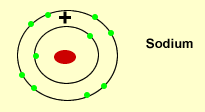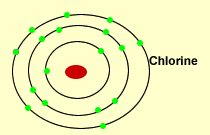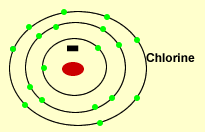|
Bonding.
Why?
|
|
The atom is like a ball of
energy, the electrons have energy and there is an enormous amount of energy
in the nucleus. Like everything else in nature, atoms would prefer to
have the least amount of energy possible. Now there are a few arrangements
that the electrons can make to minimise the energy. Two arrangements are:
- to have 8 electrons in the outer energy level (8 valence electrons);
-or to have a full valence
shell (outer energy level).
Metal atoms usually have a very poor attraction for electrons. This attraction
for electrons is called electronegativity, big word, but
it just means electron attracting strength. While non-metal atoms have
a very high electron attracting strength.
|
| Take
sodium for example, it has 1 valence electron.To achieve a more stable electron
arrangement it either has to have 8 valence electrons or a full outer shell.
|
 |
|
|
Now
for sodium to achieve 8 valence electrons it must gain 7 electrons. Considering
that it has a very low electronegativity (electron attracting strength)
this is unlikely to happen. What it can do is to let the valence electron
go and have the second energy level, which is full, as its valence shell.
This is exactly what happens and since the neutral sodium atom loses an
electron it forms a positive ion(charged particle) |
| Chlorine
has 7 valence electrons. To achieve a more stable electron arrangement it
either has to have 8 valence electrons or a full outer shell. |
|
|
|
Chlorine
has a high electronegativity so it can attract one more electron to form
an arrangement with 8 valence electrons. When the neutral chlorine atom
gains an electron it forms a negative ion (charged particle) |
|
|



